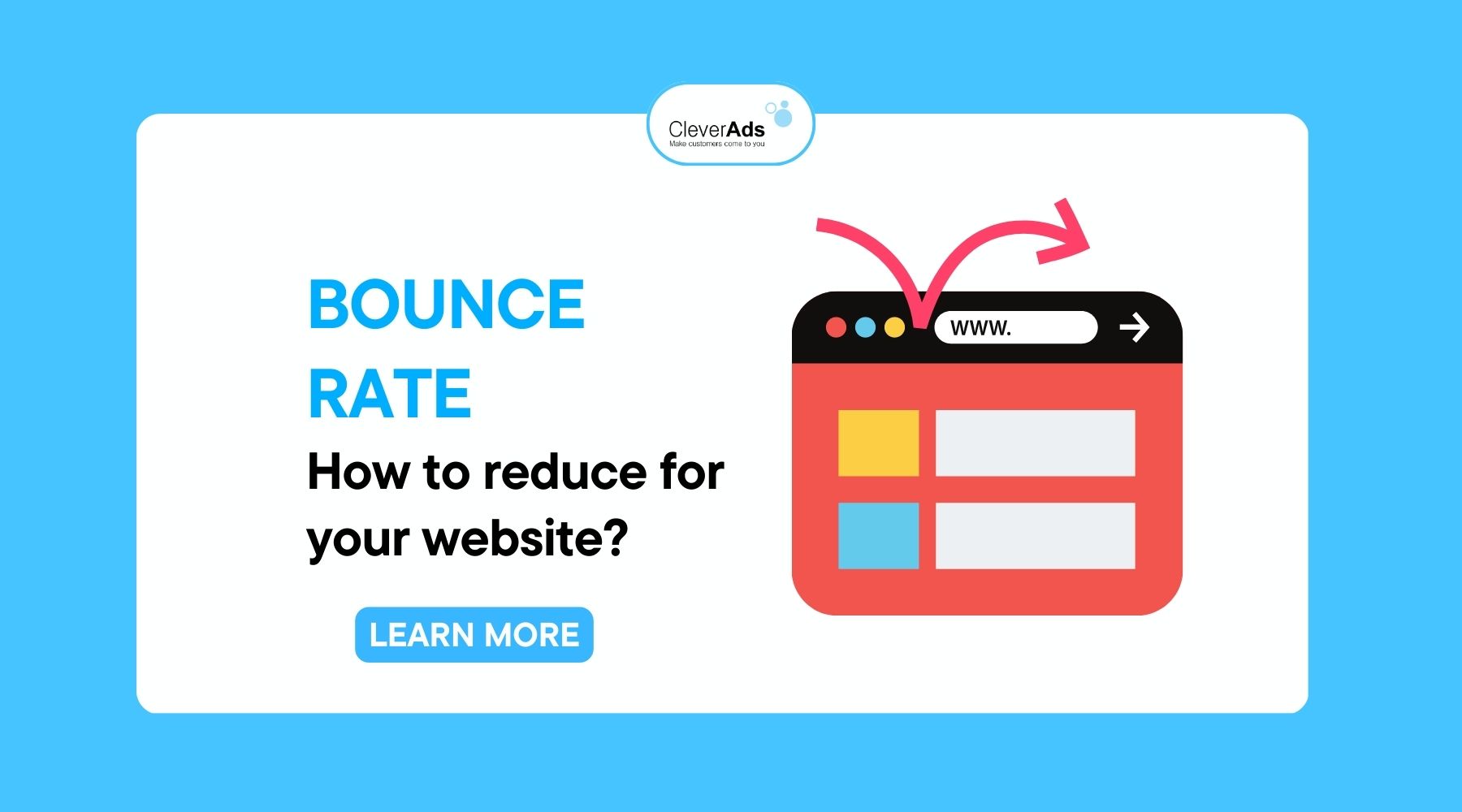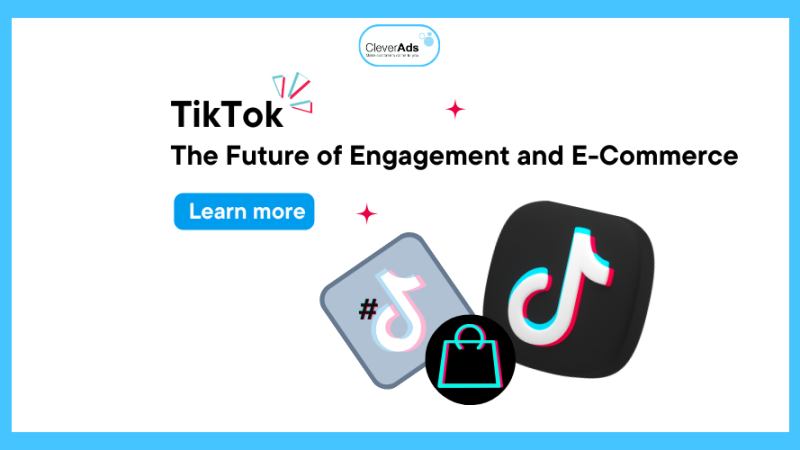BOUNCE RATE: How to reduce for your website?

Many companies have been fighting to gain online visibility and reduce their Bounce Rate in marketing. This is always the best path to success.
But what if you get many visitors and they leave without interacting with anything?
The Bounce Rate reduction strategy is a great way to get the most out of your online traffic – and guide many Digital Marketing leads toward conversion.
To help you with that, CleverAds has prepared a tailored article that shows everything you need to know about your website’s Bounce Rate.
1. What is the Bounce Rate?
According to Google, a web page Bounce Rate is the percentage of sessions on a page or times in which a visitor leaves your site from the landing page without interacting with it.
Essentially, every visitor that comes to your site (through a search engine, a link from another website, a social media platform, or another source) but doesn’t visit any pages other than the one their initial visit is considered an exit.
It means that if your site has a low bounce rate, more visitors will move to additional pages after arriving at your web page. It shows that they are interested in learning more about your company and that your website is accomplishing its goal of attracting more customers or clients.
On the other hand, a high bounce rate suggests that most of your visitors don’t spend too much time learning about your products and services, and they may not convert in the end.

2. Why does your website have a high Bounce Rate?
Many factors contribute to a webpages overall bounce rate, but the following four are some of the most common to blame for problems.
2.1. Content does not provide what users are looking for
Most visitors come to your website intending to look for specific information. They use search engines like Google to find pages relevant to what they are looking for and rely on every page’s title and meta description to determine the best option.
If a user clicks through to your site but does not find what they want, they will return to the results and choose another page.
So, if you determine that a particular page on your site has an extremely high bounce rate, you’ll want to see the page’s title and meta description (the only information shown in search results). search) and determine if it accurately reflects what the page doesn’t offer.
Otherwise, tweaking these factors is an easy way to not only reduce the bounce rate but also have a better chance of ranking and attracting visitors from keywords that are more relevant to the page’s contents.
2.2. Content that provides all the information the user needs
In stark contrast to the previous issue, some sites offer everything users want.
For example, suppose a user wants to know the exact date of a historical event, like the date the United States Constitution was signed. They search for “date the United States Constitution was signed,” click on the first result, and learn that the answer is September 17, 1787.
Then, because they have the exact information they need, they leave the site, increasing its bounce rate slightly – even though the content has everything they wanted.
If any of your pages provide simple answers to questions, then a high bounce rate is nothing to worry about. You can consider adding links to additional information or calls to action to increase the number of visitors staying on your site, but you don’t need to worry that the page isn’t hitting the mark.
2.3. Slow loading times
Internet users today expect the websites they visit to be fast. If they click on a result and it takes more than a few seconds to load, they will usually leave the outcome in the search for a faster site.
If your site has slow load times, this can be the broad contributing factor to a high bounce rate.
This problem takes longer to fix than updating your title and meta description, but it can ultimately impact your site-wide performance.
2.4. Poor User Experience
Aside from loading time, many other factors contribute to the overall user experience. If all your pages provide quality content, have links to other relevant pages, and load quickly, that could cause a poor user experience.
If the navigation on your site is confusing, not optimized for mobile devices, or simply not easy to use, this could be the cause. Work with a designer to identify possible issues, and you can improve the bounce rate and your site’s overall results.
3. Why reduce the bounce rate?
A high bounce rate can suggest search engines that your website content could be of better quality if people proceed to a page on your site and then leave without visiting any other page.
It can lead to lower search rankings. Google claims it does not use bounce rates in its search ranking algorithms, but as Neil Patel shows, the evidence suggests that this metric still at least indirectly affects ranking results.
In short, the lower the bounce rate, the more friendly your website is, and the easier it is to reach users when they search for keywords in your products and services.
Thus, a good marketing strategy to reduce the Bounce Rate is always necessary for every company. They help businesses improve conversion rates with the same digital plan and budget that they have in place. It’s a faster, more straightforward way to expand your reach.

4. Tips to reduce your webpage Bounce Rate
4.1. Better User Experience Design
A good user experience starts with a fast and well-structured website, but it goes beyond that.
It combines visual, informational and interactive elements that meet certain expectations and exceed them.
Again, use your buyer persona as a reference. What do they want when they visit your website? What are they looking for? How can you lead them and even surprise them in positive ways?
You need to rework your pages to make them more appealing.
4.2. Make sure your site is responsive
As technology evolves, more screen sizes, input methods, and device capabilities can access your website.
Many users can’t access your website, so they can’t visualize some information either.
A responsive website is developed to accommodate any of these variations – making sure you don’t lose views over such a simple matter.
4.3. Build some landing pages to increase Bounce Rate
One challenge companies face when working to reduce bounce rate is predicting your page entry points.
It does not matter how perfect your homepage it is. Most of your traffic comes from a blog post; this needs to be optimized for engagement.
Landing pages are a good solution for that. They are specifically designed to serve as the ultimate entry point – with compelling layouts and CTAs.
4.4. Keep your blog full of fresh content
The quality of your content can make or break a visitor’s experience, so it’s essential to ensure your content is relevant.
Everything you post should be clear, engaging, and relevant to the needs of your target audience. Always choose valuable, meaty content – no mouse clicks allowed!
And you will want to keep your site blog fresh through a steady stream of high-quality content.
Plan your content production strategy and stick with it no matter what.
Keep your users enjoyable using various media formats (like video, slideshow, or infographic) and combining everything in the themes department.
4.5. Show your credibility
Consumers today are savvy. They will think a lot before making a purchase decision.
It is challenging for new customers to trust unfamiliar companies. It is essential to show them that you’re worthy of their trust.
You can reduce bounce rates by ensuring your site is secure and prominently displaying any safety seals, you may have.
You should also highlight any industry awards, certifications, or achievements you may have won.
Testimonials and testimonials from satisfied customers are always a good idea.
The quality of your content can make or break a visitor’s experience, so it’s essential to ensure your content is relevant.
5. Conclusion
Think of exit rates like the “check engine” light on your car. As it continues, you know there may be a problem – but you need to check your car’s systems to diagnose it properly.
There is no one-size-fits-all fix for bounce rate, but hopefully, by reading this CleverAds article, you will know what they are and how they signal your marketing strategy can help ensure success for your website.
CleverAds, an agency under Clever Group with nearly 15 years of experience, confidently asserts that it is always the ideal destination for businesses to send their products, services and brand image associated with the goal of government a wave of recognition across a wide range of customers.


